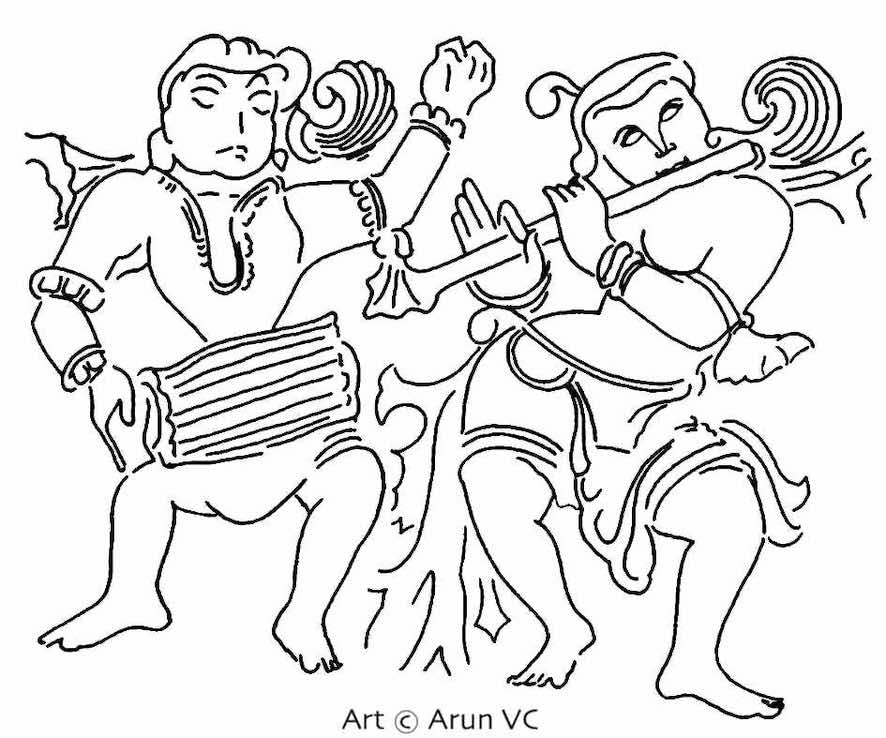
A tala trainer for self-study by Kalaimamani TR Sundaresan (voice & lessons) & Ludwig Pesch (talam cymbals & concept)
Archive.org
Be patient while audio-files are loading. For details and more options visit https://archive.org/details/Tala-Anubhava-Experiencing-South-Indian-Rhythm >>
Tips for self-study
For some of the basic lessons your tutor provides pauses to be filled by participants while the accompaniment of cymbals and claps continues. This is followed by yet another repetition by the tutor.
Listen attentively and repeatedly to each lesson. This will heighten the experience of rhythm (laya) required for the realization of “bhava, raga and tala”, i.e. the proverbial unity noted musicians regard as essential to any Carnatic composition figuring in traditional music that has stood the test of time (sampradāya which connotes “continuity” as well as “authenticity”).
“Sampradaya is like a broad river and the bani is a tributary.” – Umayalpuram Sivaraman
“The lakshya [practice-based] sampradaya of music which is passed from guru [teacher] to sishya [student] gets altered when music is performed in a recital. This happens because of the elements of ‘entertainment’, such as indulgence in virtuosity or novelty for its own sake, and playing to the gallery. Because many performers also happen to be teachers, such changes, subtle and not so subtle, that creep into the recitals also influence the teaching, including the course content of contemporary music education.” – N. Ramanathan